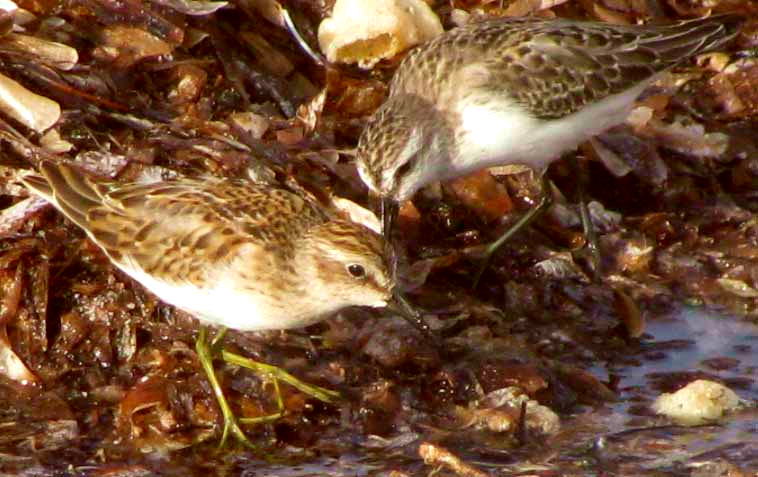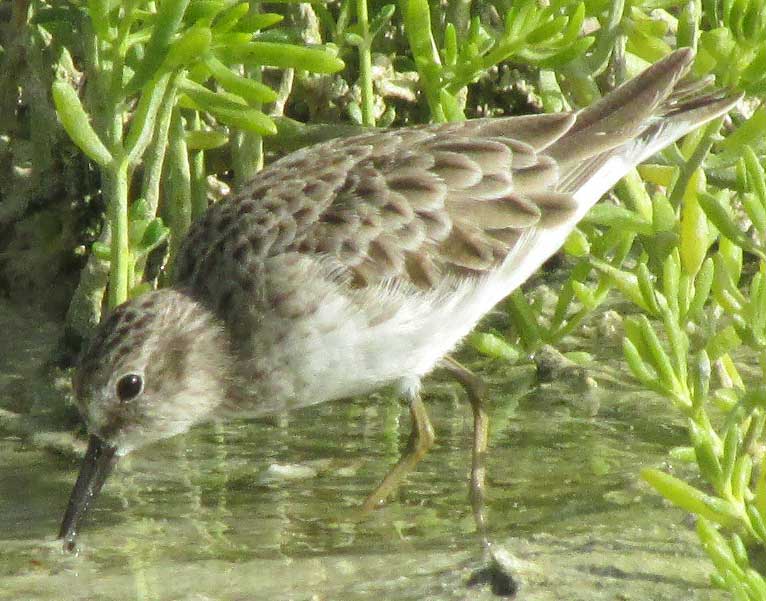Excerpts from Jim Conrad's
Naturalist Newsletter
from the September 18, 2011 Newsletter issued from Mayan Beach Garden Inn 20 kms north of Mahahual; Caribbean coastal beach and mangroves, ~N18.89°, ~W87.64°, Quintana Roo state, MÉXICO
LEAST SANDPIPER

Seawater pooled in a depression amidst an ankle-deep carpet of turtlegrass where at high tide the biggest waves washed across a sand barrier. About a dozen sandpipers preferred this relatively sheltered pool to the open, windy beach. Even without binoculars it was clear that one bird in the flock was different from others. It was brownish gray on top and white below like everyone else, but also it was conspicuously smaller and had yellowish legs instead of black ones like theirs. That's him at the bottom left above.
This is one of the easiest-to-identify of all sandpipers because it's the smallest species and has those yellow legs. It's the Least Sandpiper, CALIDRIS MINUTILLA. In the picture, the bird at the right and behind the Least is a Semipalmated Sandpiper, which is five inches long (12.7cm), which is smaller than a House Sparrow. The smaller Least is only 4-3/4inches long (12.0cm).
Other sandpipers in the flock waded in the pool, probing with their beaks. The Least foraged with a different strategy, keeping to the sides and picking in the turtlegrass where abundant springtails popped around the bird like tiny exploding kernels of popcorn.
Least Sandpipers overwinter throughout most of Mexico and as far south as Peru and central Brazil.
from the March 15, 2015 Newsletter issued from Río Lagartos, on the Yucatan Peninsula's northern coast (~N21.60°, ~W88.16°), Yucatán state, MÉXICO
LEAST SANDPIPER VARIATION
At the estuary's edge a small, long-legged sandpiper probed mud beneath shallow water with his sharp, straight beak, as shown below:

Sandpipers in their winter plumage can be especially hard to identify. This one could have been a Least Sandpiper, common here, except that in its setting it looked too large, didn't have the well formed white eyebrow shown in field guide illustrations, and Least Sandpipers legs are supposed to be yellow, but the legs of this individual seemed greenish to me.
Still, after conferring with more birders more expert than I, the consensus was that our bird was indeed a Least Sandpiper. It was another example of birds sometimes not fitting the ideas we develop about them.